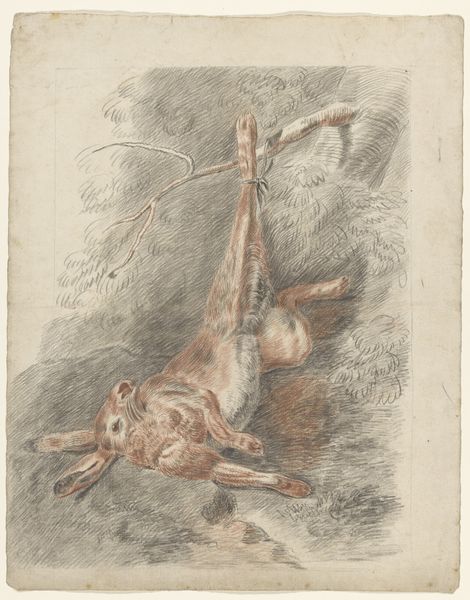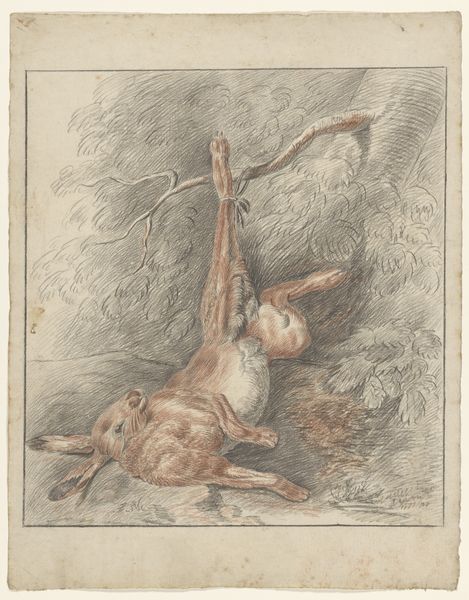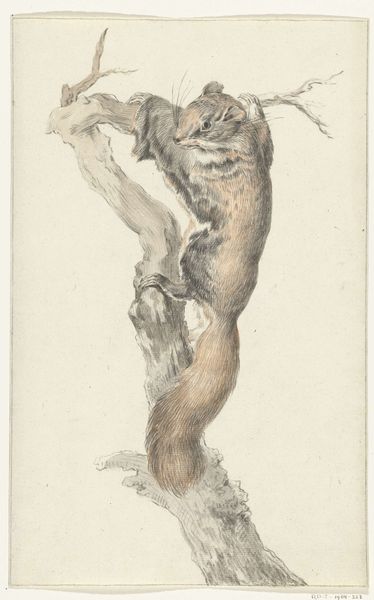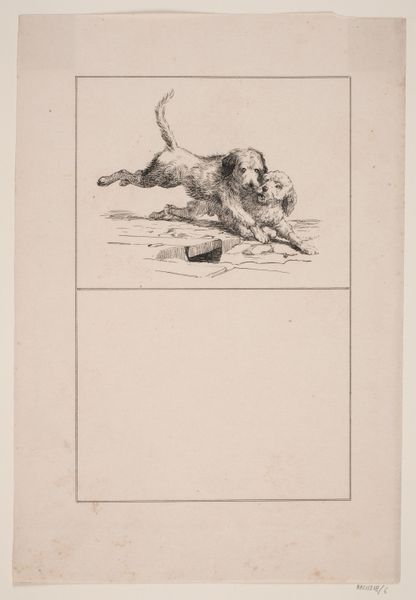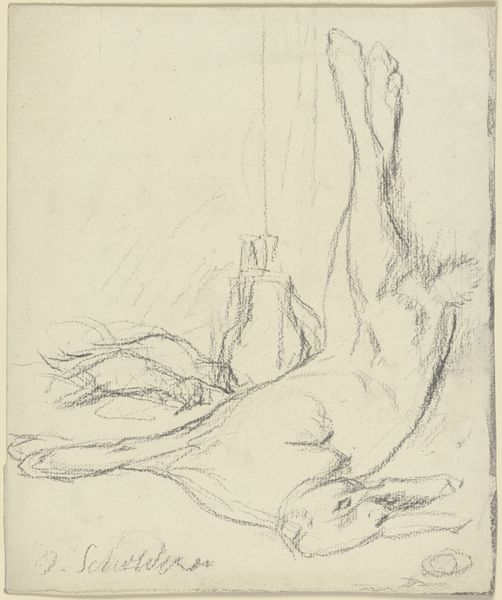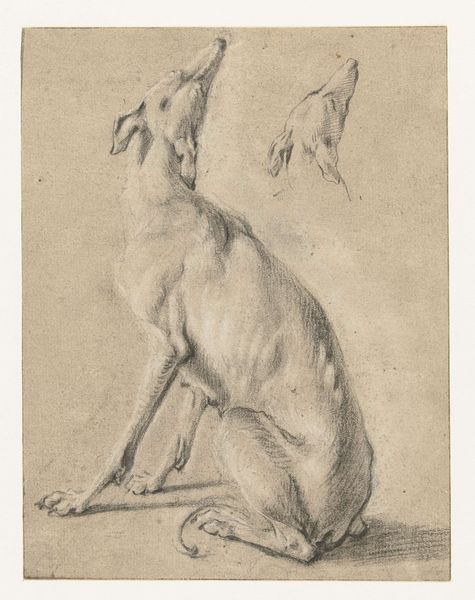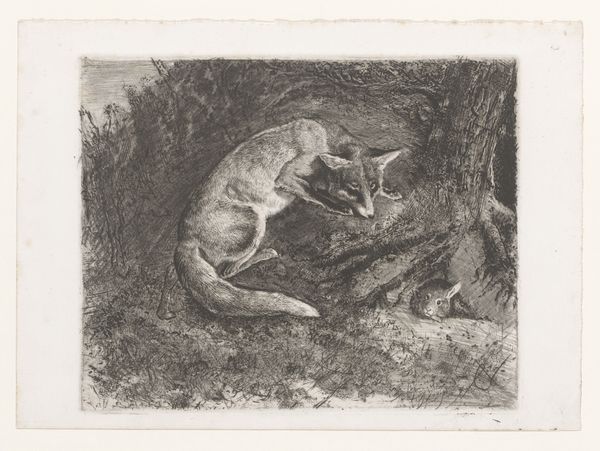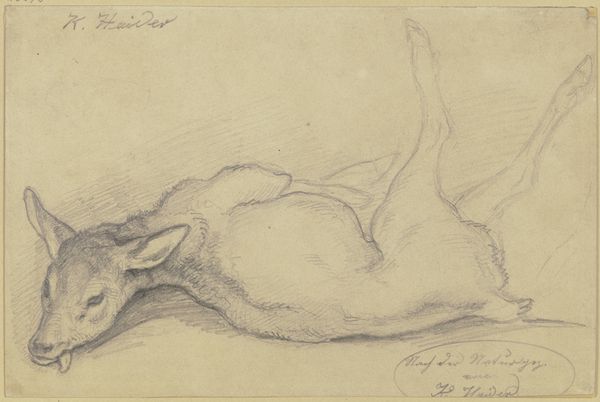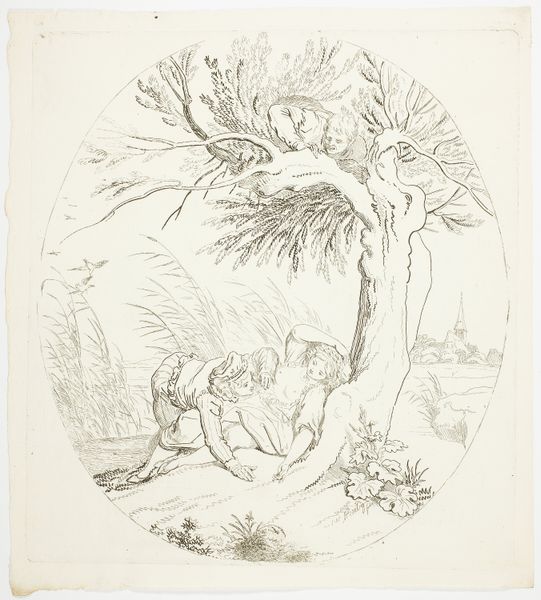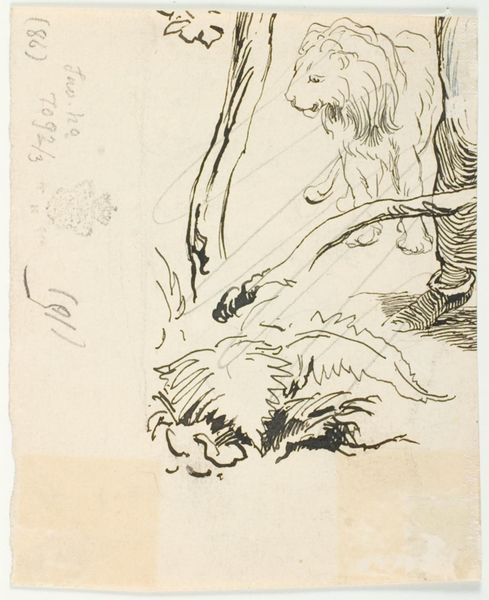
drawing, dry-media, pencil, charcoal
#
drawing
#
charcoal drawing
#
dry-media
#
pencil drawing
#
pencil
#
charcoal
#
realism
Dimensions: height 533 mm, width 412 mm
Copyright: Rijks Museum: Open Domain
Curator: Johannes Tavenraat’s drawing, “Dead Hare Hanging by One Leg,” thought to have been created around 1824, depicts exactly that, using primarily pencil and charcoal. Editor: My initial reaction is one of slight unease, but also immense respect for Tavenraat's technical skill. The weight of the hare, the texture of the fur…it’s quite arresting. Curator: Indeed. Notice how the artist has employed hatching and cross-hatching to create depth and volume, particularly in the fur and musculature. The tonal gradations achieved with such simple media are remarkable. Editor: I find myself reflecting on the still-life tradition and its relationship to power dynamics. Who consumes this image and what does that signify? It becomes a symbolic power dynamic—the hunter, the hunted, the viewer…all entangled in a web of consumption. Curator: From a purely formal perspective, I am struck by the compositional arrangement. The diagonal of the hanging hare bisects the picture plane, creating a dynamic tension, while the surrounding foliage, rendered with delicate strokes, serves to frame the central subject. Editor: I’m more inclined to see that foliage as context. It reminds us of the hare’s former life, its lost habitat. It encourages a kind of empathetic imagining… what the animal experienced. Consider the period in which this was drawn. How did Dutch society regard animals at that time? What role did hunting play? Curator: Such inquiries, while interesting, take us rather far afield from the inherent qualities of the drawing itself. Consider the expressive quality of the line, the subtle modulation of tone. One sees not merely a dead animal, but an essay in form and texture. Editor: I agree it is exceptionally rendered, but to strip away the ethical questions… isn't that also a choice? How do we, as contemporary viewers, reconcile the undeniable beauty with the troubling implications of representing animal death with such detail? Curator: I suppose it's a dialogue that we, and the artwork, can’t ignore. Thank you for sharing your view. Editor: And thank you. It's these contrasting views that often lead to deeper understanding and ultimately, greater engagement.
Comments
No comments
Be the first to comment and join the conversation on the ultimate creative platform.
